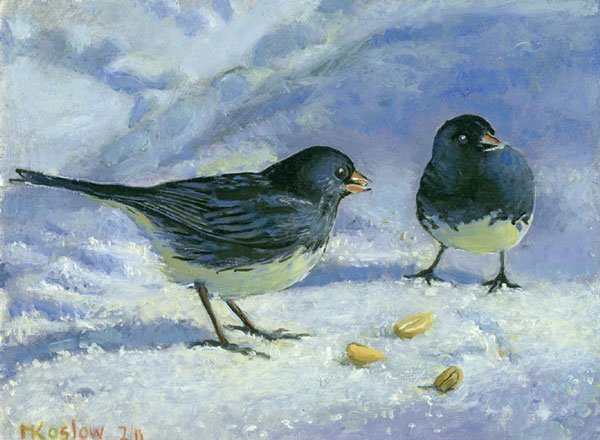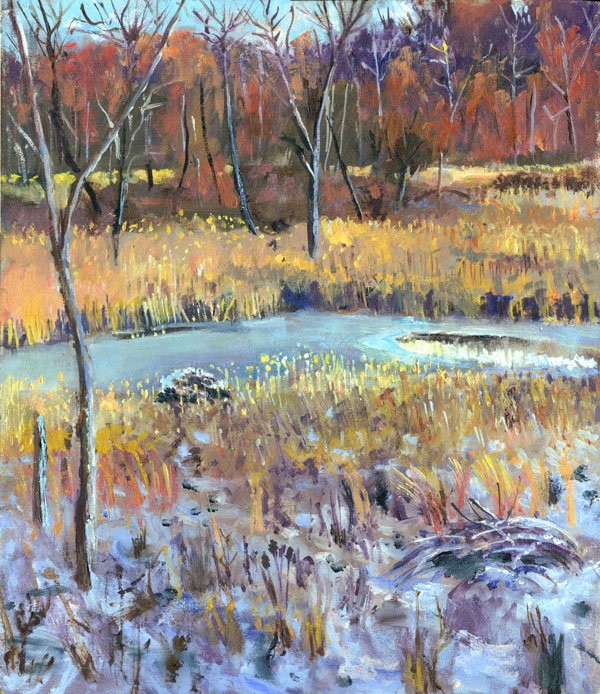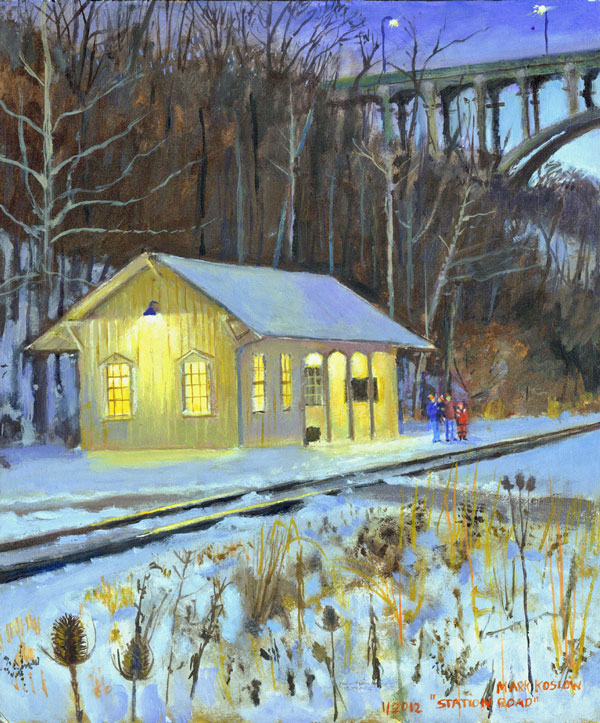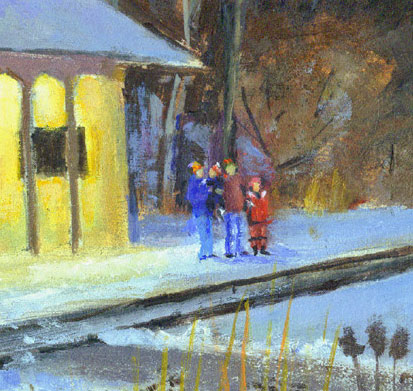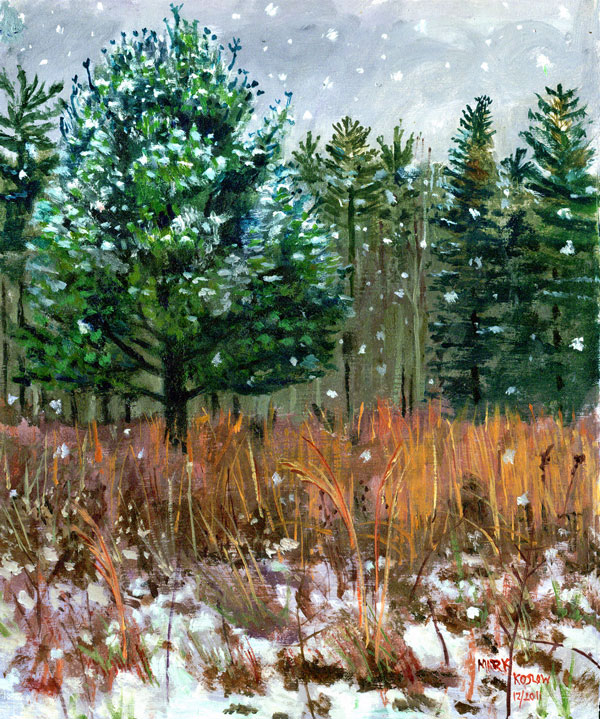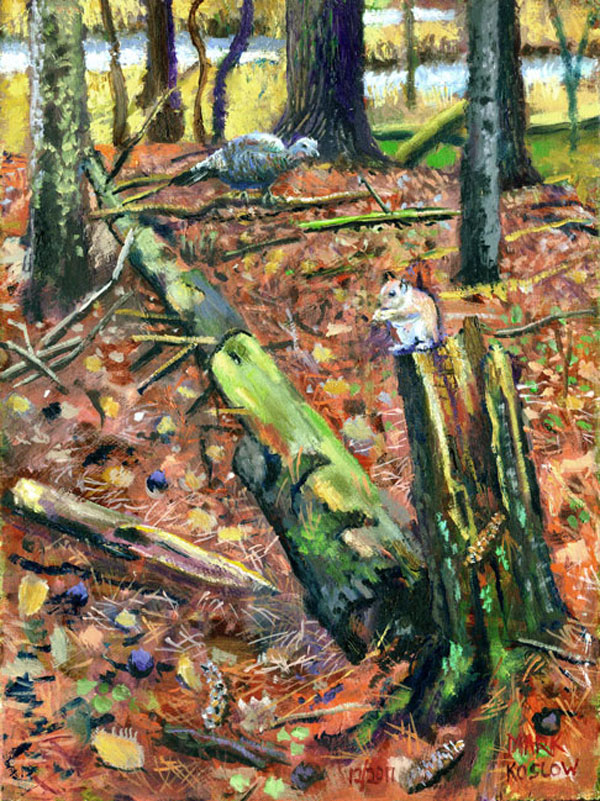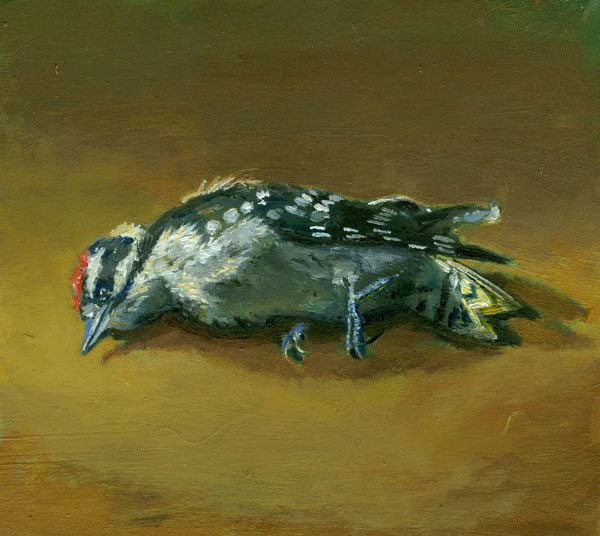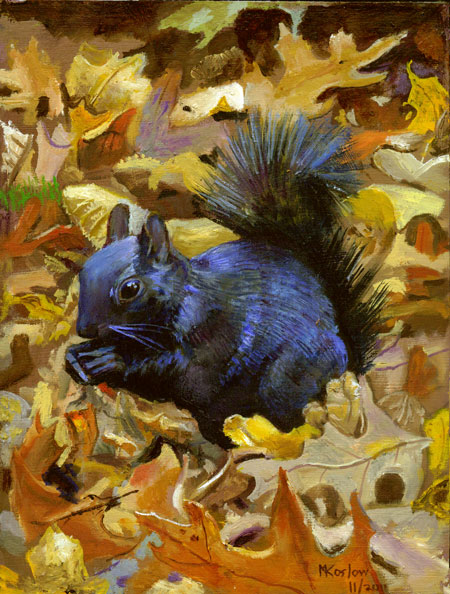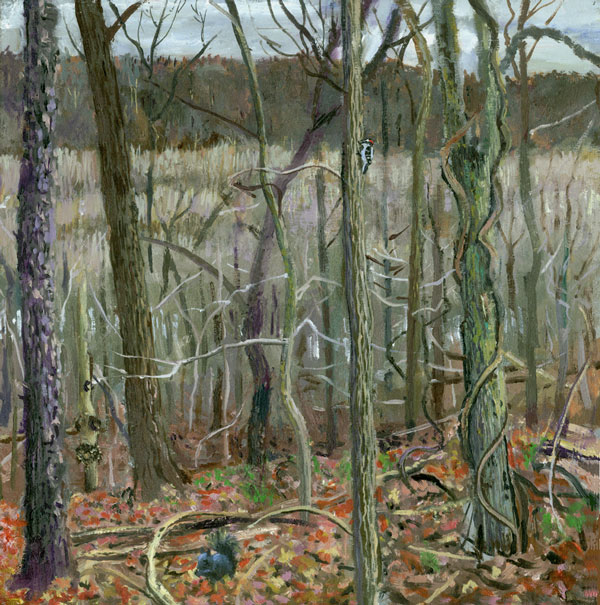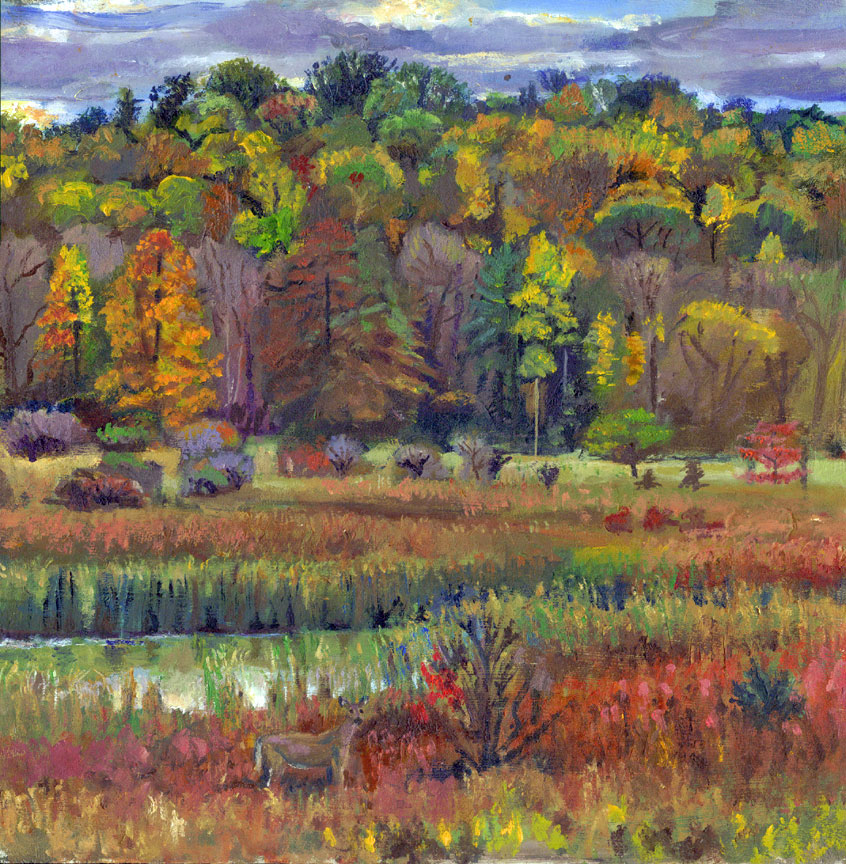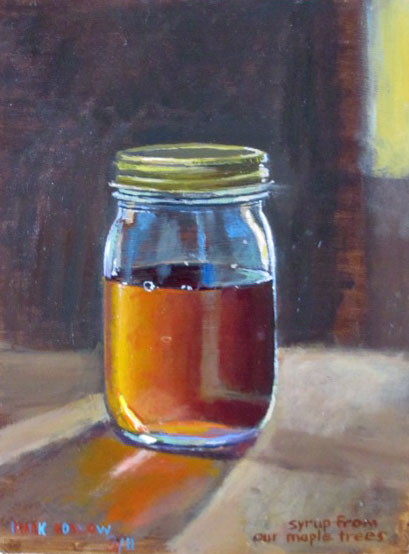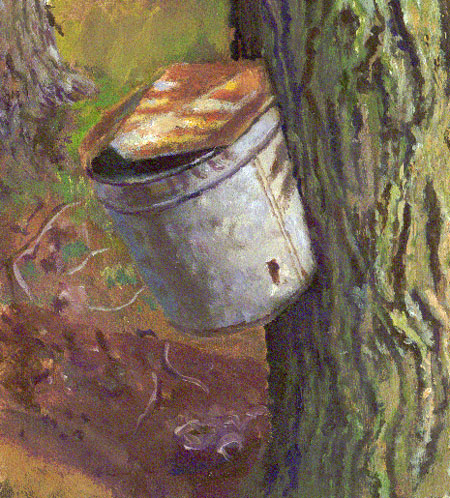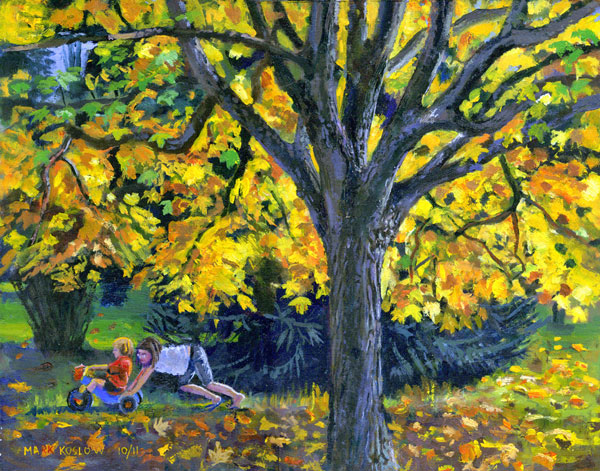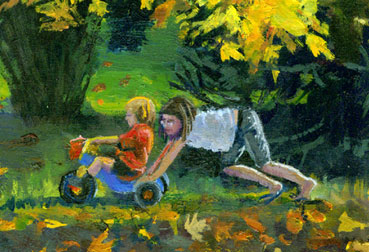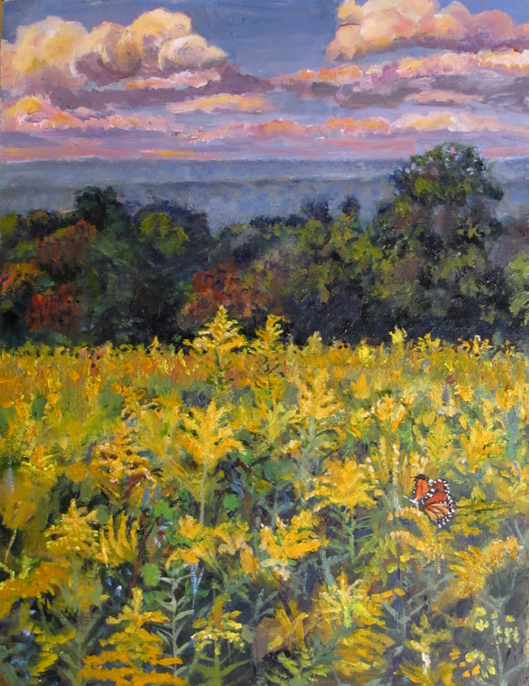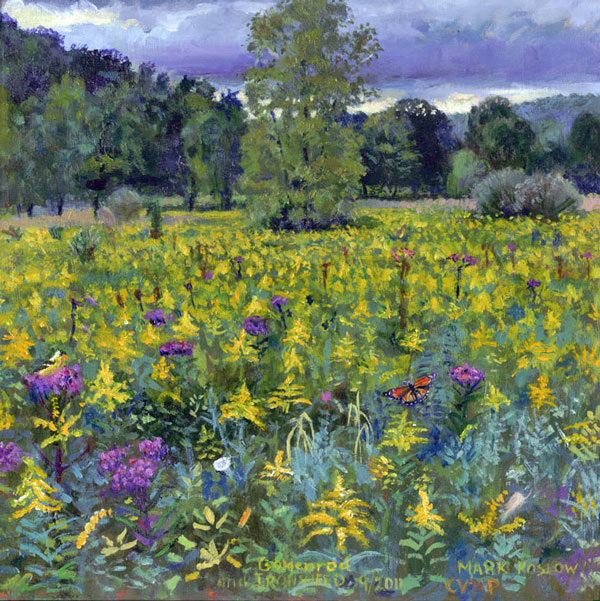Below these first few paragraphs are the paintings, with the most recent first
and the oldest last. So if you wish to read the chronicle from the beginning begin at the bottom of
the page. Scroll down to the very bottom where there is a short essay
called "Observations on Art". Skip up from that to begin with
the first painting. If you wish to read the latest works begin
at the top, below the nest 9 paragraphs......
What follows is the story of a few years in paint, part catalogue of places,
trees, waters, and people, part year in review, part autobiography. These are a
series of 40 or so mostly Plein Air paintings done in, or close to, Cuyahoga
Valley National Park (CVNP). The park is large, about 20,339 acres or
31.78 sq miles. The Cuyahoga Valley was already known for its beauty in the
1800's when people came from nearby cities for carriage rides or boat trips
along the Ohio and Erie canal. In any case, the history of the park is really
about the effort to preserve the obvious beauty of the place. This beauty has to
do with features that predate private property and human use. To a large
degree the ancient beauty of the place has been preserved.
In 1880
Valley Railroad became
another way to find recreation in the Valley. Actual park development began in
the 1910s and 1920s with the establishment of Cleveland and Akron metropolitan
park districts. The
National Park overlaps parts of the semi-wild areas of the Metroparks of
Cleveland. I think of CVNP and the Cleveland Metroparks together as one of the
best natural areas of any city in the country. These parks stretch Between
Cleveland and Akron. Many people made these parks possible in years past.
The Metroparks system, for instance, was largely created by an amazing man,
William Stinchcomb, in the 1930's. He created the Metroparks during a
progressive era when such things were still possible and the fox was less in
charge of the hen house. The successor "Boards" who have run the parks
since then have had alliances to corporations and have sometimes been guilty of
corruptions. The Metroparks Board has been prevented from turning it into a
giant golf course or selling it to MacDonald's because it has an excellent
mission statement and the public has opposed such corruptions. But a number of
the governors of the Metroparks have been found guilty of corruptions and
crimes. The National Park is less threatening to the land, at least so
far, if only because congressional corruption is further afield and has so for
not be able to sink the wildly popular National Parks.
It is true there has been no lack of trying to
open up the parks to oil companies and others. Private enterprise hates the
whole idea of public ownership of anything. Business sees nature as an
exploitable "resource". One need only look at how nature is treated outside the
park system to see that Business does harm to the natural world virtually
everywhere, 'externalizing' risks onto animals and trees, seas and rivers,
soaking up profits for the rich and putting hardships and taxes on the poor and
middle class. There have been efforts to defund the parks. Hopefully the
relatively new CVNP will not become as corrupt as the Cleveland Metroparks
became. But the parks still stand and hopefully will be enlarged and protected.
More parks should be created.
In short, there is is a large
area of semi-wild public land where I live and it is a great and wondrous
thing. So here I wish to celebrate it. This essay or little book is partly
done in praise of public lands. I am making an art about local plants and
animals and people that are close to me, an intimate art of earth, science,
scholarship and story telling.
As I painted more and more of
these paintings, they began to echo each other until what you see now is a
complex tapestry of people, plants, weathers, birds and animals in space,
tied together by a mentality and a steady method of inquiry and observation.
These are objective works, done by hand with brushes and oil paints. I stand
with my paint box, which I carry on my shoulder into the woods or beside a pond,
and place on a tripod. These paintings are done conscientiously and
accurately. And they are done partly in rebellion against the orgy of arbitrary,
human-centered subjectivism that has ruled art for the last 100 years. The "avant
guarde" was useful at the beginning, but i the end became an orthodoxy far more
insidious than what is originally sought to replace. Now hatred of beauty is a
standardized dogma My my own aesthetic notions and interests are not with
the current art world but gravitate toward some of old masters: the
Dutch Realists, Peiter
De Hooch
and
Rembrandt,
Da Vinci
and the
French Realists. Among American Artists I
like
Willard Metcalf and a few, not all, of the
works of
Wyeth.
I also like some regionalists, two
in particular who are both eccentric nature painters,
Burchfield
and
Uttech. There are a few Plain Air paintings I like such as these:
here,
here and
here.
I like Van Gogh's devotion to nature and social issues and Degas ability to
draw, as well as Monet's use of color and effort to perceive the "envelope " in
nature as he called it. I particularly like Monet's Haystack series for what it
reveals about the use of color.
My art is not merely optical. Cezanne
said of Monet that Monet is "just an eye, but what an eye?" I am not sure
he is right that Monet was that superficial. Indeed, Monet excels where Cezanne
fails and that is because Monet had real insights about color and perception,
landscape and the feeling of light in space he called the "envelope". My opinion
of Cezanne is not very high. He really could not draw. He started out
doing very violent scenes. Later he seemed to reduce the violence in him to a
very cramped proto-cubism which I do not admire. His late Bathers have always
seemed to me pathetic, the emperor with no clothes. Above all I like Da Vinci's
intelligence, scope and use of art as an extension of inquiry. So my
understanding of art is really that art is an extension of science and thought
and not a form of visual entertainment for the rich or propaganda for the
powerful. These paintings seek to go beyond all the nonsense about modern and
post-modern and to plant art firmly in the place where Da Vinci wanted it to be.
So it might be of value
here to define were I stand on the subject of what is and is not art. But as
this is a somewhat theoretical discussion I will append it below. Therefore I
have added six paragraphs of comments about art and aesthetics at the bottom of
this page. It is under the heading
Some Observations of Art .******
OK. Let's look at the actual paintings. On
average, I have done a few paintings per month, not very many by contemporary
standards. And it was not easy work, but took a great deal of concentration and
purpose. I was also caring for children most days and working a job as a
painting and drawing instructor during this time. During spare hours with my
wife's and kid's help I was able to get out and do these. They are in some of
them and so am I. I mean there to be this element of a loose chronicle of our
life in nature.
It is interesting that Cuyahoga National Park follows the Towpath
Trail alongside the historic route of the Ohio & Erie Canal. I have yet to paint
the locks or other remains of the canal. I also haven't done the main water
falls as yet, Brandywine and Blue Hen, opting for the less well known ones.
I probably will paint these eventually, but for now, other things have called
me. The winding Cuyahoga River, (Cuyahoga means "crooked river") gives way
to deep forests, rolling hills, and open farmlands. But I have mostly been drawn
to natural features, botanical treasures, as well as geographical features of
portraits of water and streams, tree portraits, beaver dams, lodges and
wildflowers, as well as the remains of history in the park, the old hoes, barns
and hints of lost days. The old covered bridge, and the old train that goes
through the valley or one of the the old stations where it stops, these4
too have held me rapt for days at a time while I paint them .
I try to show the park partly though the eyes of my kids but largely through n
adults eyes, reflecting and thinking about real things in s real way.
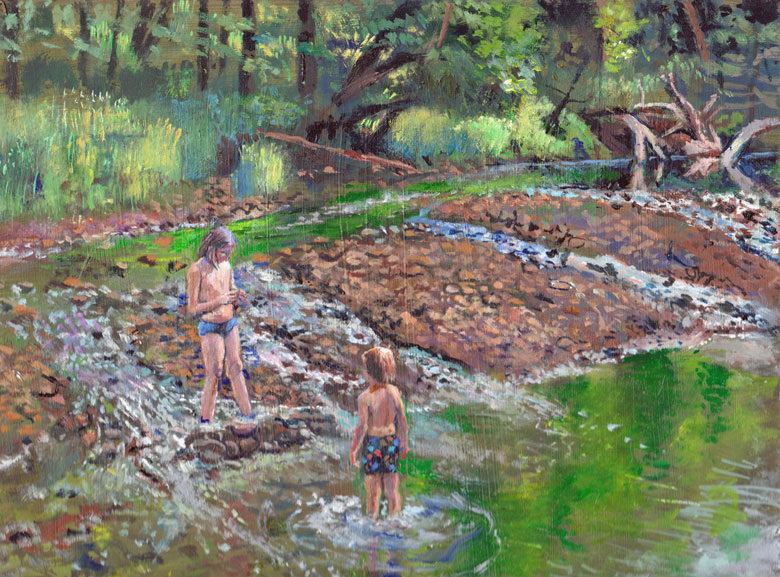
Dam Building
July, 2013 .
I really do
not see that much difference between all the species and humans. Our
interdependence with all living things becomes more and more obvious as one gets
older and really looks at things. I still think I am a student, though I
am in my fifth decade now. I had kids because of birds, as I have said. The two
years I spent at Heroes Wetland really made me aware of birds and their babies.
The wonderful study I did of Canada Geese and orioles in the wild between 1999
and 2001 or 2002 taught me so much about being a good father. It is literally
true that birds and animals taught me to love parenting. So in a way when I
paint my kids in nature I am doing birds and animals. Indeed, the more I
have studied evolution the more I see that we have all grown up on the earth
together, and though here are great difference there is great unity too. This is
the main point of the Origin of the Species. Dinosaurs became birds, microraptor became a blue jay. Speciesism, the idea that one species is superior
to all the others is a juvenile anti-Darwinian attitude. Humans do not "possess"
nature as Noam Chomsky claims in a recent essay. That is an immature and patriarchal attitude to
nature that has to do with conquest and machismo, the illegitimate and unjust
powers of the world. Even the rocks and trees in my
back yard are not mine. I am merely a caretaker. I try to disturb as little as
possible, to nurture when I can, and only remove things like poison ivy that
might harm my kids.
So I really do not see
that much difference between all species and humans..
I did this painting in the last few weeks. I had
to stand it the stream to do it as my kids played. The kids love it here and no
one was there but us. They were building a sort of dam so I called in "Dam
Building". My son is only four so he would not pose for very long of
course, but my daughter was very helpful. I had to do most of him from a photo,
but managed to block her in from life. I find myself experiencing more and more
pleasure in the act of drawing or painting.
After I finished this work I thought
of various works of children or youth in water I have admired
in the past. Ther is Rembrandt's amazing "Woman Bathing in a Steam" , Thomas
Eakins' the Swimming Hole, some of Sorolla's kids on beaches and George Bellows
42 Kids. These are all great works in different degrees and for different
reasons. Rembrandt' is a virtuoso performance golden color, and
paint become clothes and water become tangible. Bellows is quite humorous,
almost a cartoon, and Eakins is a lovely exercise is classical balance with a
deep understanding of the human figure, achieved over many years. Mine is much
more ordinary that any of of these. There is no parody or irony in my work as
there is in Bellows. Mine is closer to Eakins, probably, though much less
planned and posed. Eakins was hounded by his interest in the human form. It
appears he suffered from a Christian prudery about the body seems absurd now, as
does the rebellion against the same Christian hatred of the body--- as the body
is not a source of shame and is innocent. This is a picture of ordinary
kids playing in a healthy creek on a lovely day in summer.
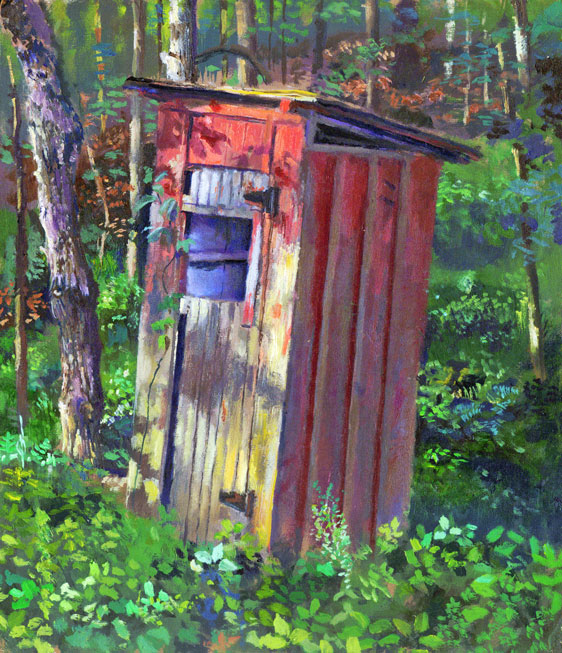
June, 2013
When I showed this to the former owner of this house, a
woman who used this outhouse for fifty years, she looked very wistful and
thanked me for seeing the beauty in it. The park ripped out the barn that used
to be on this property and moved the outhouse form where it used to be. So it
hovers on the edge of a little ravine, and there is a low hill opposite. One of
the boards was broken off the nicely made door. The hinges are getting rusted
and a vine creeps up the side and poison ivy and other plants grow beneath it.
Light danced on the front of it as I worked. It took me quite a few visits to
finish this. It was harder to do that it looks.
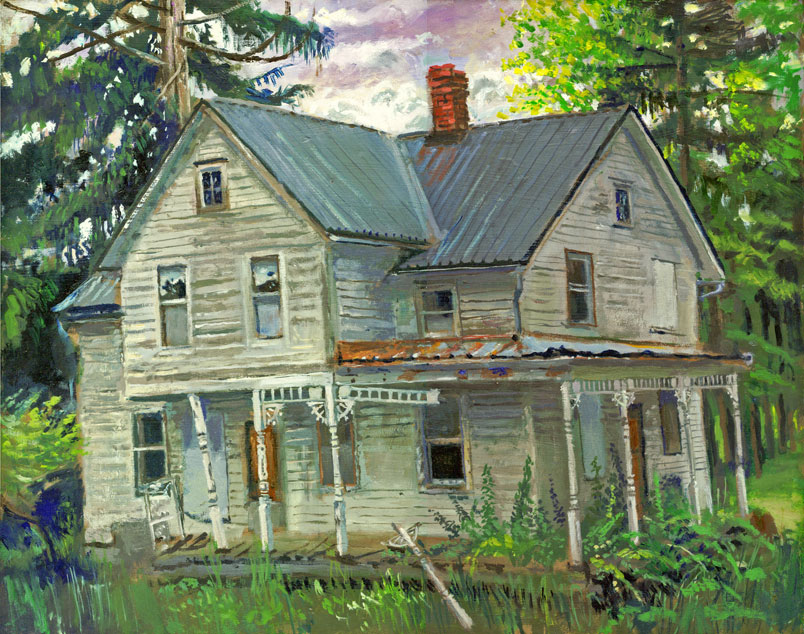
I
had been passing this house in the National Park for a long time and was always
struck by its age and loneliness and wondered why it just sat there, abandoned.
It is so strnge when a home looks homeless. I've thought a lot about the housing market these last years with so many people
being thrown out of their houses, foreclosed on by corrupt banks.
In fact, the banks are responsible for the housing speculations that lead to the
‘crash’ of 2007. They helped engineer overcharging
and specious house loans, defrauding billions from house buyers. The
government allowed the banks to speculate in this way, hurting many Americans in
the process. Then the government allowed
the banks for foreclose on people who had been charged outrageous and inflated
prices for houses. Some had been sold bogus and inflated “subprime loans”, which
should never have been allowed.
So the government hurt millions of ordinary people on both sides of a scam that
that sent house price climbing and then plummeting, with banks and realtors
skimming off huge profits and victimizing millions.
Some of the investment banks, like Bear Sterns, went bankrupt, due to their own
greed and corruption. More of the backs should have died. But the
government bailed many others out, proving yet again that the government helps
the abusive rich and neglects and abandons
the victimized middle class and the poor. The banks should never have been
bailed out. People who were
foreclosed on should have been helped and they weren’t. “Too Big to Fail” was a
lie. It was ordinary people the government should have helped and who should
have been bailed out.
So I started looking at this abandoned house and its graceful columns and beautiful old Victorian tracery, as a lost house, and a dream
deferred. I could see the beauty and love in the construction. I painted it to celebrate a time when it was not so
hard to get a house and one could take great
pride in it. I finished this painting wit foreclosure and lost homes in mind. I
admired the sadness of the broken porch, sagging on the left some, and the
winter storm window falled down and off the porch. After I was done with the painting and had started
to he outhouse on the same land, I met the sweet old woman that lives near the house
and learned her story. Turns out the house had been bought by force of eminent
domain by the government in the 1980's and they had promised to fix it up and make it part
of
the park as a place where a family could live. But the parks had been neglected
and stinted on by Congress, since the Republicans wish only to feed our money to
the rich and starve the National Parks and education and all things that really
matter. and so this house fell into neglect and was
vandalized. The old woman who used to live there was angry at how the government
treated the house she grew up in, rightfully so. She is a wonderful old lady and
reads books and studies history. Her favorite politician was Eleanor
Roosevelt, who cared so much for ordinary Americans. That was my mom's favorite
too . Indeed, there are few politician twho actually "represent the people" most
of them represent corporations, who are neither people nor worthy of
representation.……
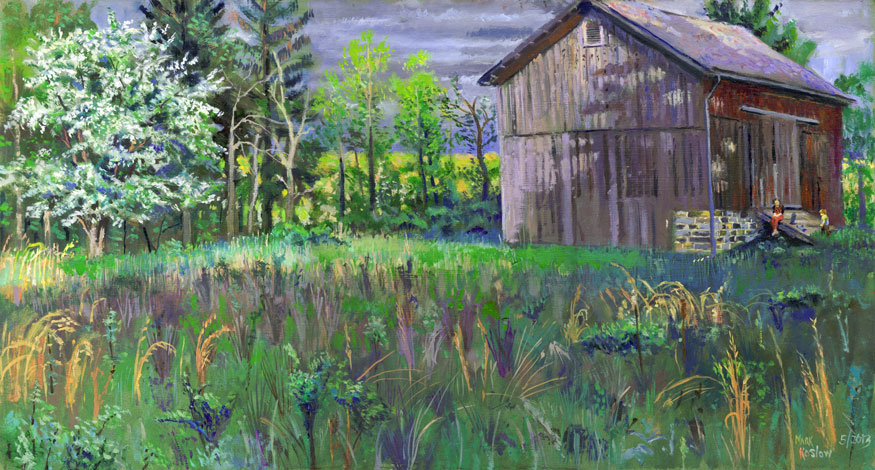
I love spring trees, there
so much life in them, and fragrance. The birds and bees love them too. This crab apple was
full of bees and flies of many kinds. I had wanted to paint this barn for some time
too and had done two other paintings in
this area, one of the woods in November looking across the Valley and one of a
pine tree in snow. In the one in the woods looking across the valley I stood to
the left of this painting down the hill a bit, and in the snow paint of the pine
I stood to the left of the barn maybe twenty feet. Deer come and go in this
field a lot and that explains why there were so many ticks. I got one and my son
got two, but we got them off us before they did any real damage.
The one he got in his ear was particularly objectionable. he felt it there
and took it out himself. They are not insects but rather are in the arachnid
family. I took to wearing high boots, and we made the kids wear them too, which
is why you see my daughter’s boots on the platform up to the barn where she sits
in her socks.
The sun on the opposite
side of the Cuyahoga Valley shines on the spring trees over there, the new leaves looking yellow in the bright light. The sky is grey but
no rain threatening over head. I had been sick for a month or so and was now
feeling much better. I was glad to be out painting the spring light again. Life
is short and celebrating beauty in life is very much a part of this
series. I loved painting all the grasses in this field, the light on the old
barn and the glow of the sinking sun on the far hills. It is hard to explain to my kids that the
light on the leaves in the center of the paintings is what their father thinks
life is all about.
Something of the great value of life is in that light, in the color of it, in
the leaves themselves, in the fact of existing. Henry Thoreau called it
the "light on a bank side in
autumn", and I know what he meant. It is nothing mystical or religious, it is
rather the special quality of being on our earth, which the early or late
sun suggests at dawn or twilight. It is such a rich and varied world and we are
part of it and this is a tremendous thing. Life on earth is all we have and so
light on leaves, light on water, and and life itself are precious, even if often
difficult and sometimes full of problems. It is true that life, like light, is
not a measurable quantify. Matter has mass and occupies space and has weight.
Energy or light does not seem to occupy space, nor to have weight, though it
appears to be affected by gravity. But it is our world it illuminates, the world
where science seeks to understand who, where and and what we. The amazement of
life is that it exists at all and since it does, it is up to us to inquire and
appreciate it, or not.

Trillium in spring. Near Furnace Run creek. It is a lovely plant. When it is not predated too much it
can grow into marvelous stands of hundreds of flowers. But a stand of hundreds
of them is rare. I have only seen
that a few times in my life. Deer consider it a delicacy. Though there may be
other reasons
it is rarer than it used to be. I have seen deer eat it. But there
are places where it continues to grow despite the deer. It would be interesting
to study this further. Furnace Run Creek which has plenty of deer,
is also one of he cleanest of our creeks. The CRCPO says that
Furnace Run is one of healthiest,
intact streams that flow into the Cuyahoga River. Previous work in Furnace Run
(1991-1996) indicated that this watershed is in full attainment of biological
and water quality standards- which means Furnace Run is meeting Ohio EPA
standards. Some sites within Furnace Run exceeded Ohio EPA standards and were
noted as “Exceptional Warm Water Habitat (EWH)”. http://cuyahogariverrap.org/ABOUTCRCPO.html
This may be one reason why
wildflowers do so well there, the water is largely free of pollutants. It
would be good to see a serious study done of Furnace run and why species around
it seem to do better than other creeks in our area. I also did the Virginia Bluebell painting there,
in spring 2012, below.
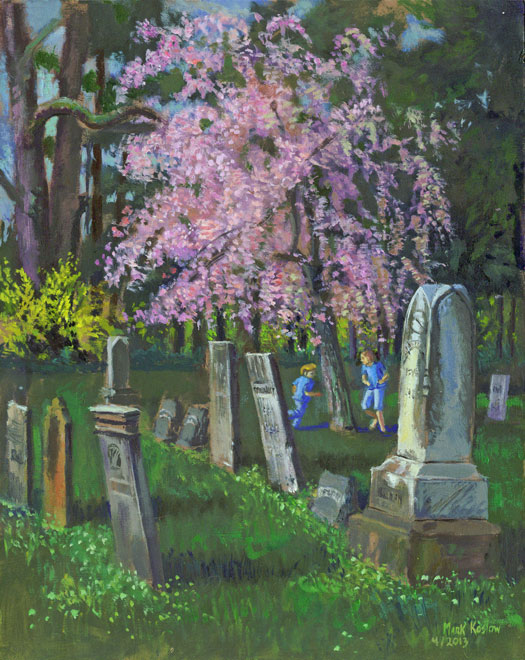
This is April. I
had been quite sick and was in the hospital a few times. It got me
thinking about dying again, and how much I love my kids. I want to
stay alive for them. I had been thinking of painting this graveyard
in previous springs becasue of this marvelous Cherry tree, so much
like the one that was at my mother's house, which I loved. But this
one is of the graveyard down the street from us. It is very old,
with graves back to 1800. I love these old stones and I especially
wanted to do the cherry tree there, which I have admired for some
years. Maybe because I was sick recently I have a certain affection
for graveyards and seeing the kids with such happiness there was
marvelous, as I was again saved from death and so very glad to be
with my kids,---- I hope for many years yet. We had a few picnics in
the graveyard and when the kids had gone the black cat—oddly named
Plato--- from the veterinarian next door came and curled up at my
feet. Nice to paint with a cat purring curled at your feet. It has
been a beautiful spring.
I love the spring trees, so much life in them, and fragrance. The
birds and bees love them. It is a picture with contradictions in it,
certainly, but this is reality and not fiction. Beauty in the midst
of so much death and childhood heedless and exuberant, chasing each
other around the cherry tree.
The graveyard is not far from our house. We have brought the kids there several
times and they are hardly strangers there. We have taught them to love
graveyards and not fear them. We go see my mother’s grave once a year at least,
and have a picnic on her grave and reminisce about her life. They are allowed to
run and play as they wish. So to them graveyards are a place of life dn not of
doleful death. While I was painting here we had a picnic too. They played hide
and seek with my wife and it was a finny and light time. While I painted this
one the kindly black cat from next door, the opposite of Edgar Allen Poe’s
malicious feline, came and curled around my legs as I painted for a few minutes.
After expressing affection for me and my company, he settled down and slept
leaning against my feet for the rest of my session. I saw him other days too as
this painting took at least 5 visits. The gorgeous yellow Forsythia was in bloom
and the Cheery tree, which was the main object of my painterly attention.
This graveyard has graves in it that go back to 1830, which is not old by
Massachusetts standards, which go back to 1620 and are positively young by
English standards, which has graves that go back to Roman times or before----
but here in Ohio that is very old indeed. One of the stones is actually a man
who fought in the revolutionary war in the 1770’s and died in 1830. I love the
character it he old stones and left some of the newer ones out of the painting,
just so I cold paint more of the old ones. The stone takes on a life of its own,
made by what nature has done to it over the century or two. The white marble one
was leaning a bit and stained by who knows what lichens or weathers. Some hands
holding flowers and ones that were sandstone had obliterated names worn down
worn by wind and rain
Maybe because I was in hospital recently I have a certain affection for
graveyards, Hard to explain this and seeing the kids with such happiness there
was marvelous, as I was again saved from death and so very glad to be with my
kids,---- I hope for life for many years yet.
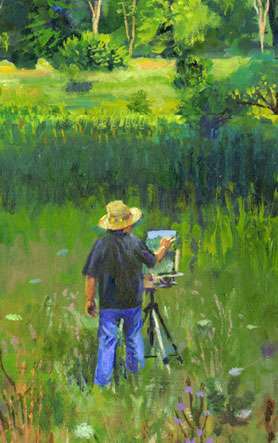
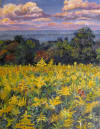
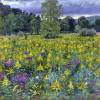

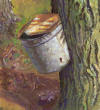
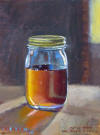
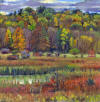

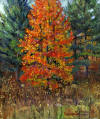

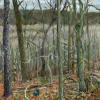
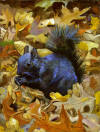

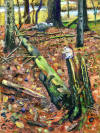
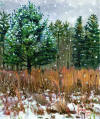
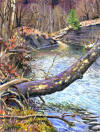
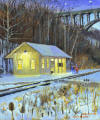
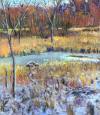

_small.jpg)

-in-fl_small.jpg)
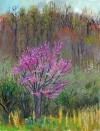
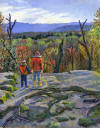
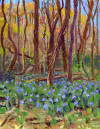
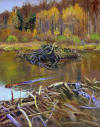

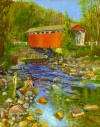
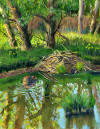
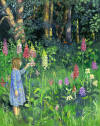

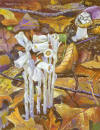
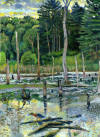
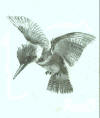
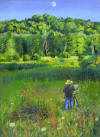

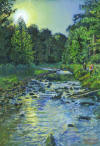
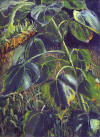

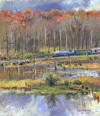

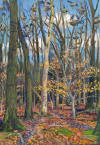
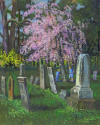
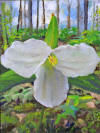


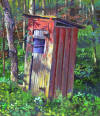







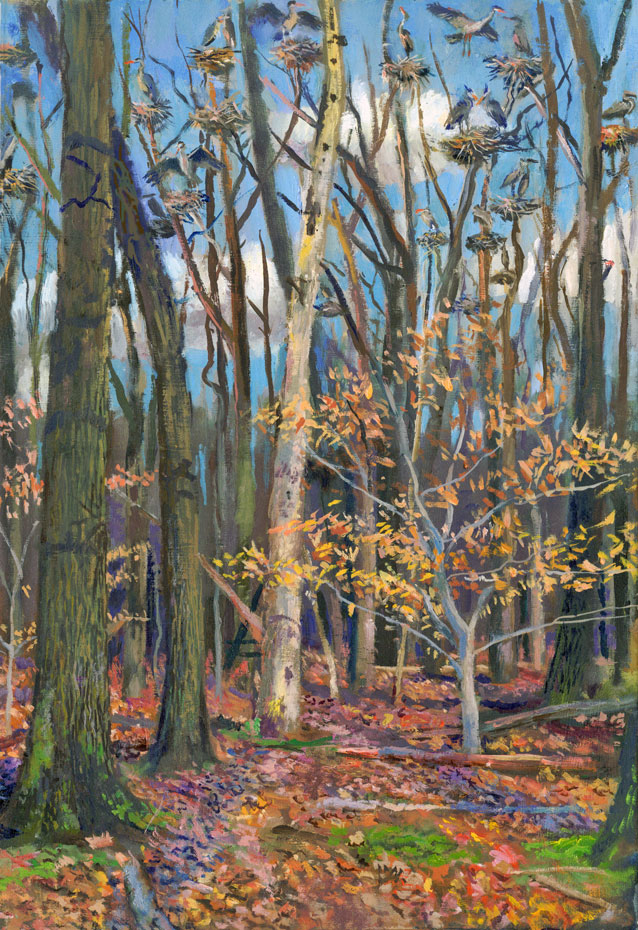
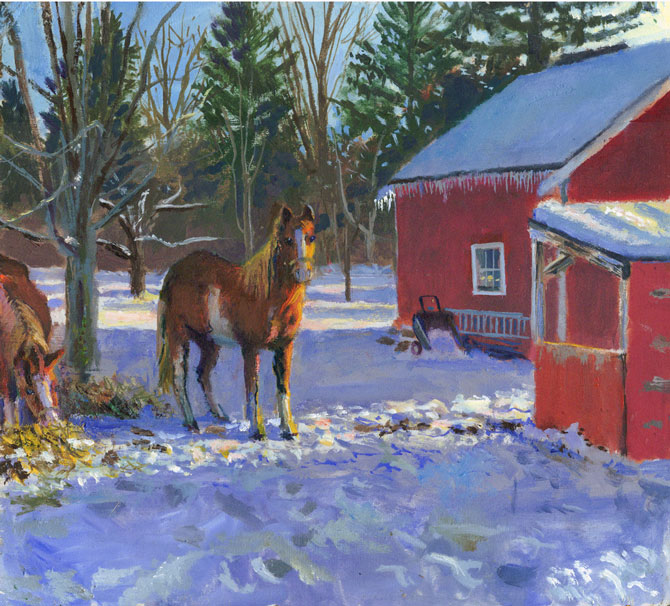
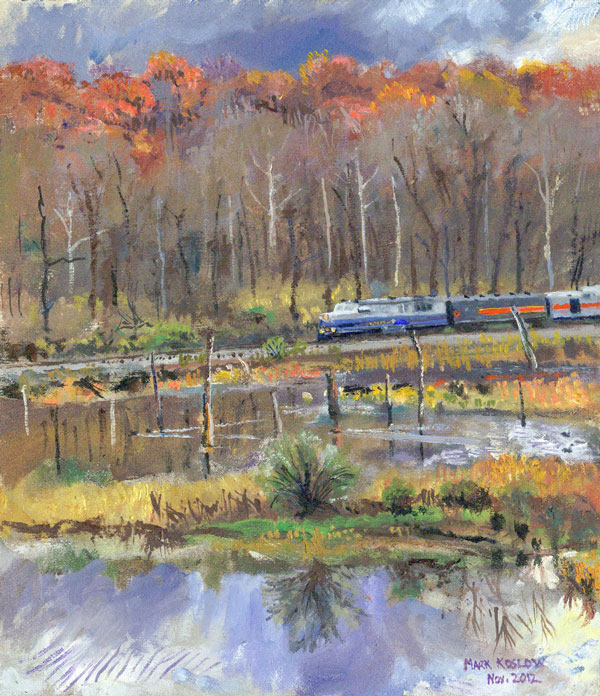
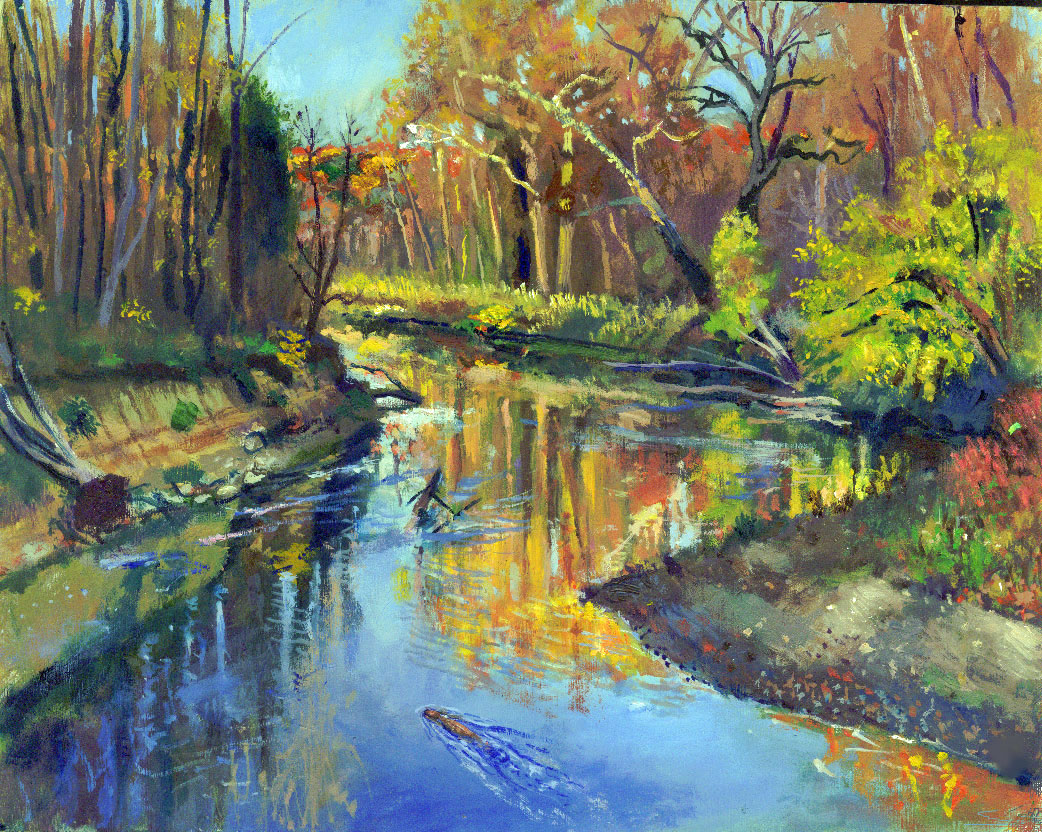
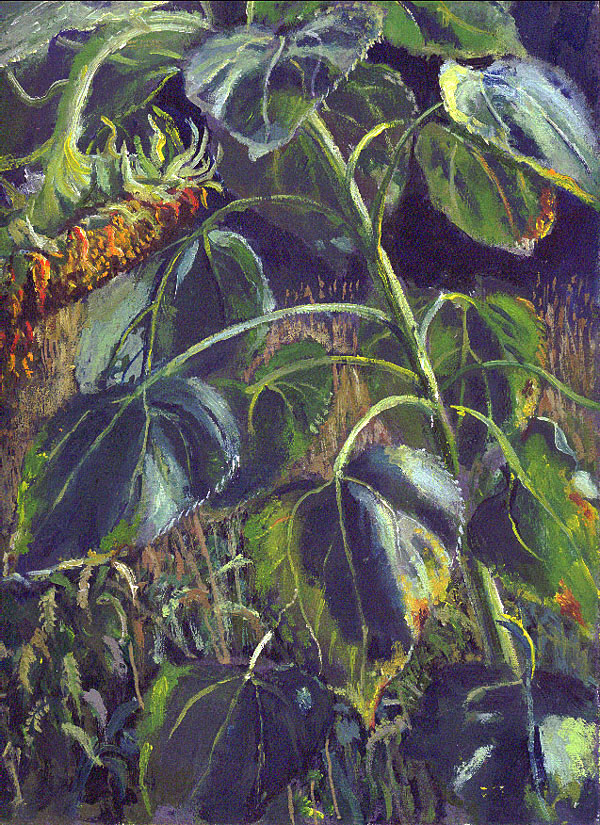
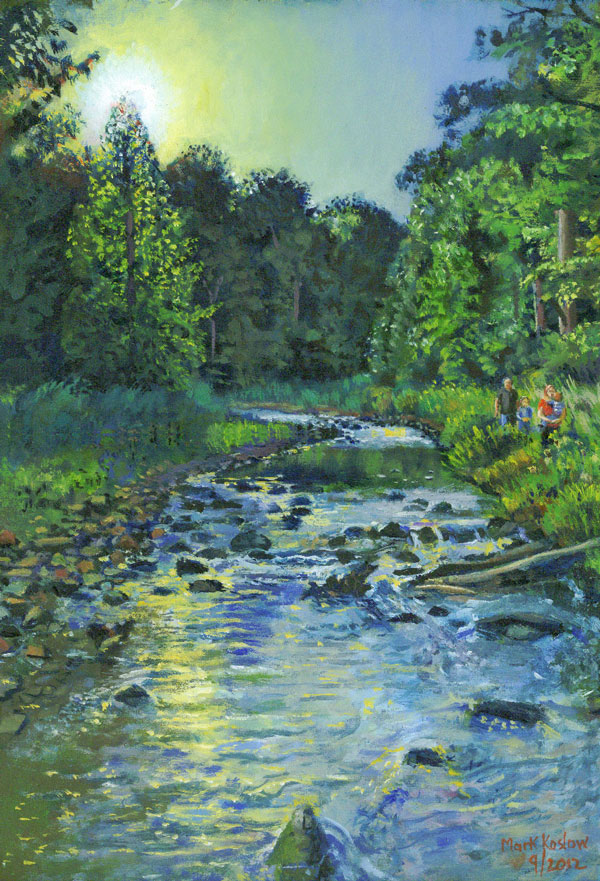


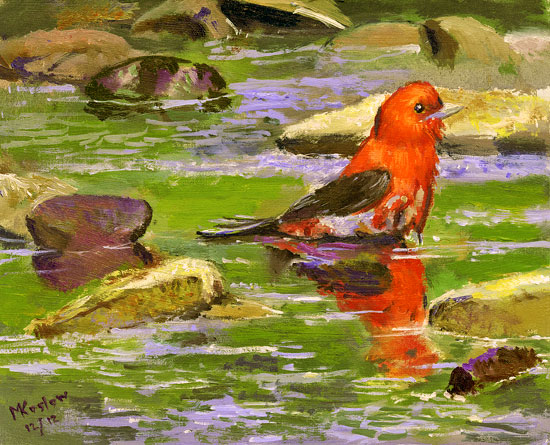
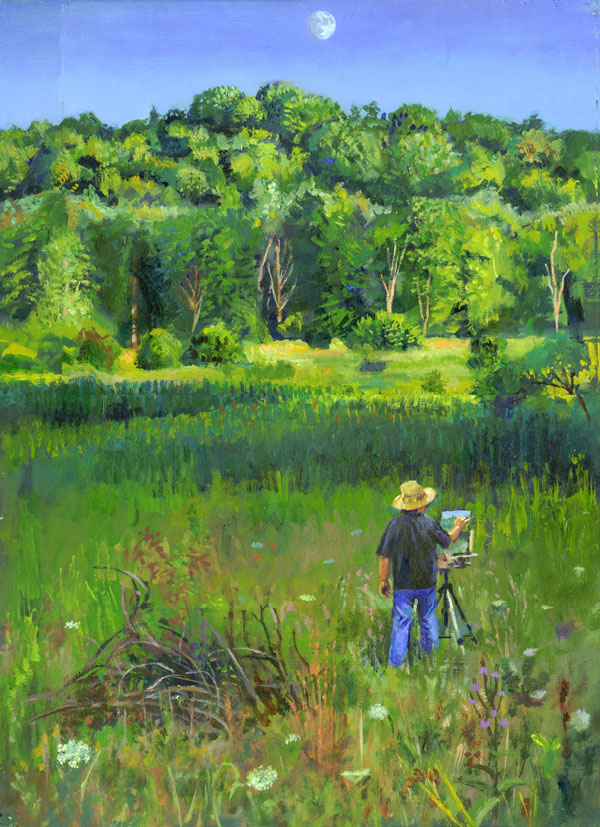
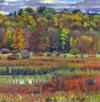
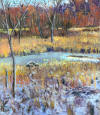
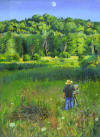
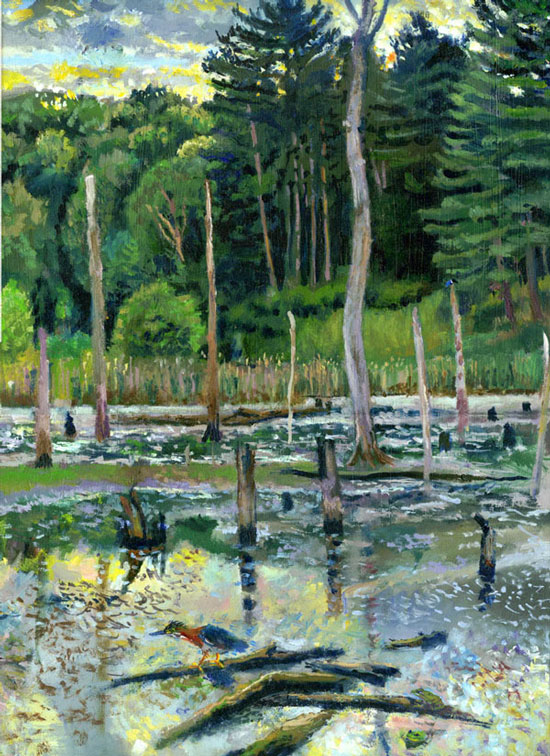
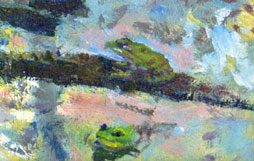
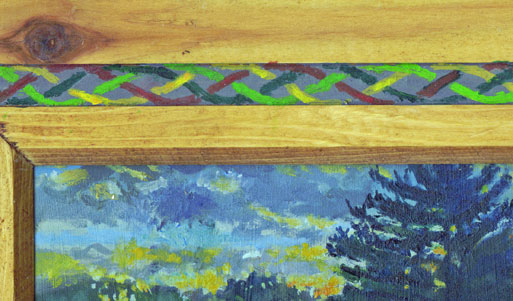
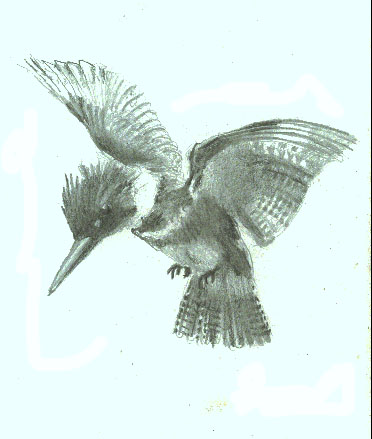

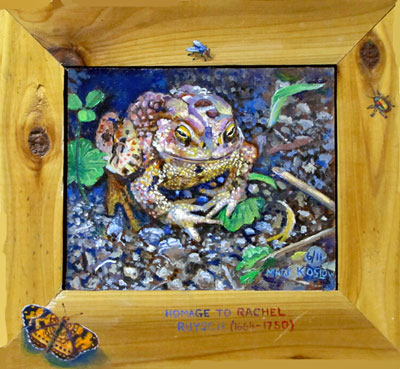
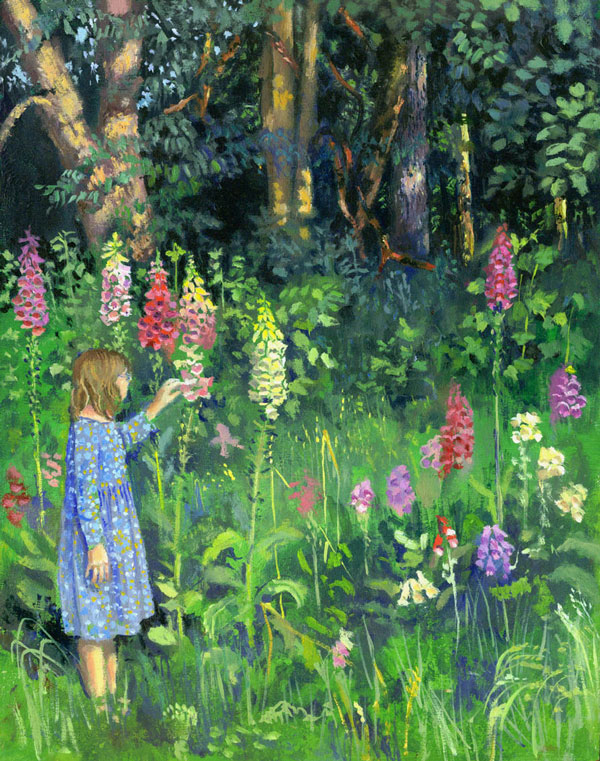
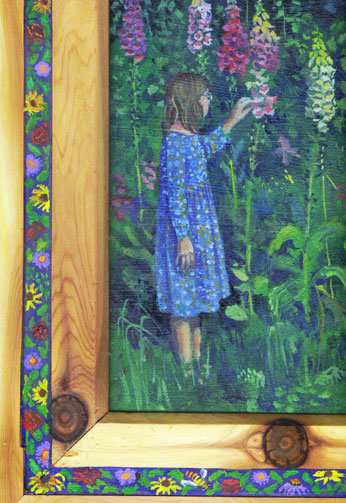

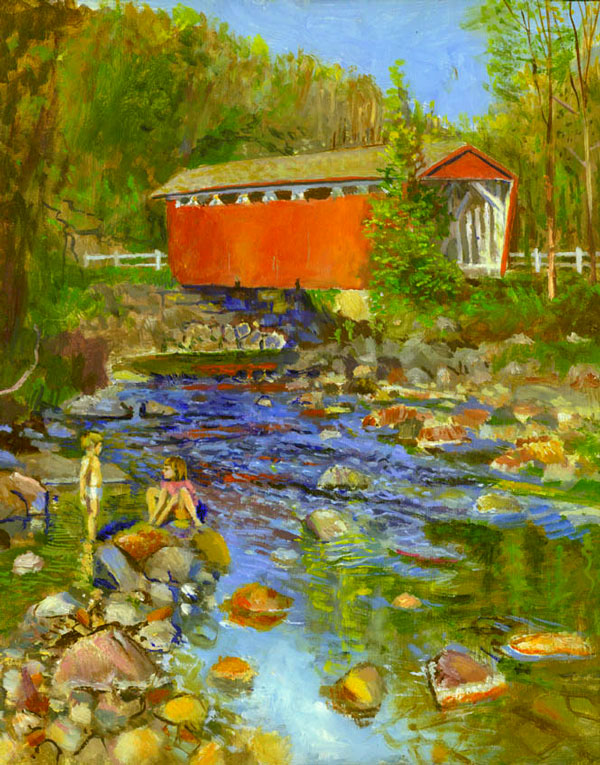
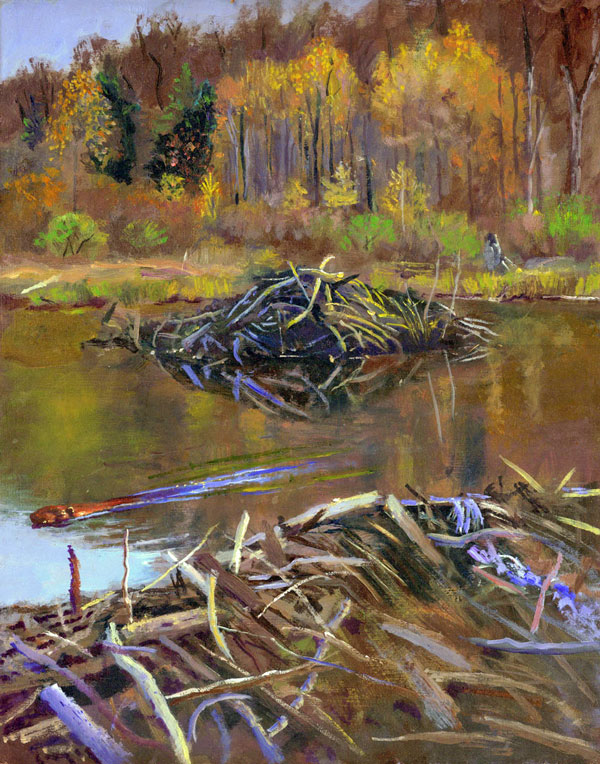 ;
;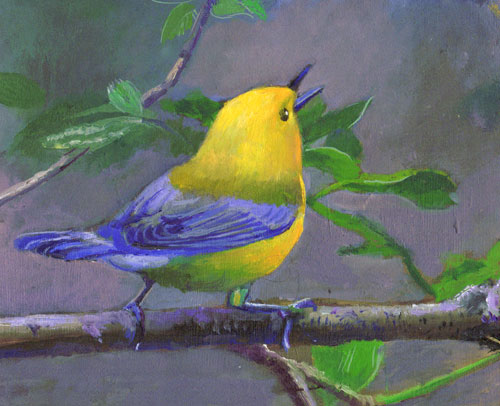
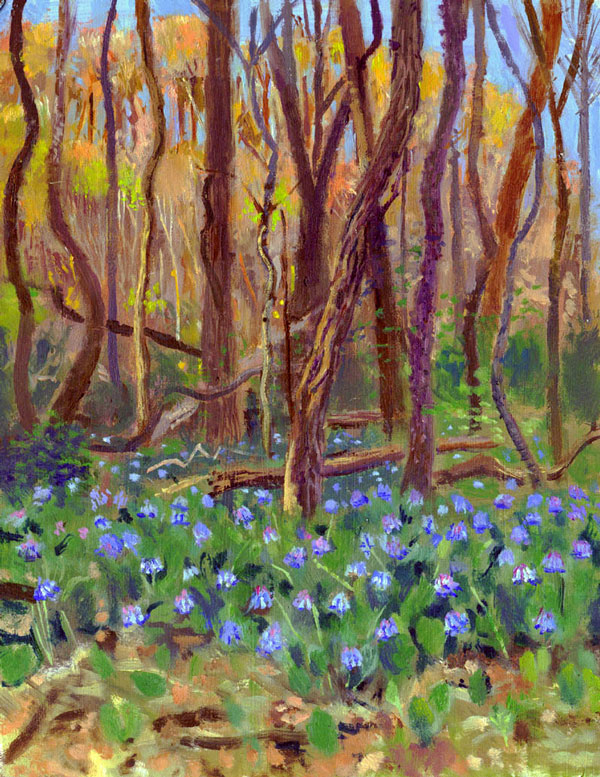
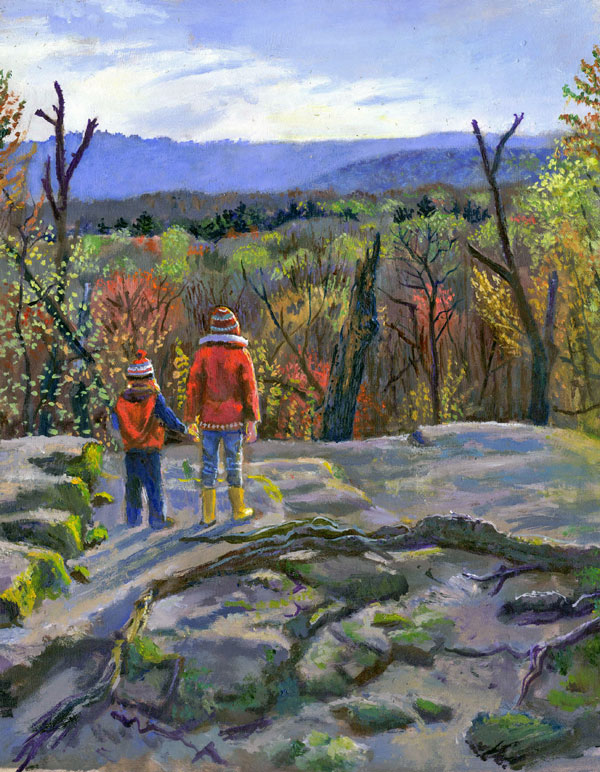
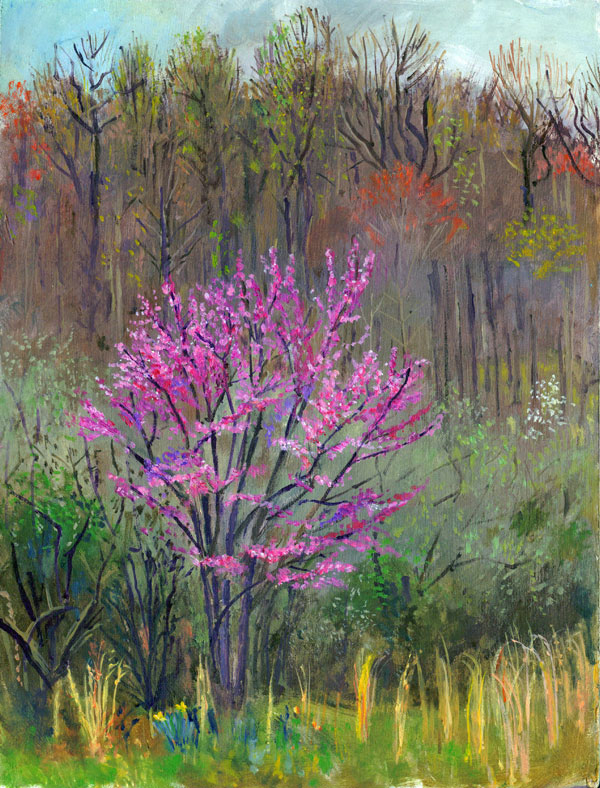
-in-fl.jpg)
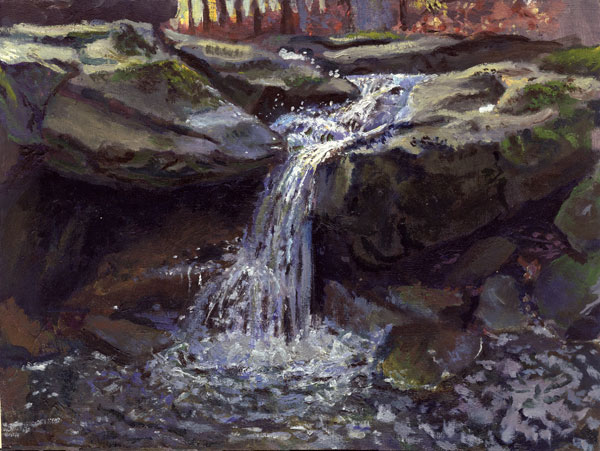
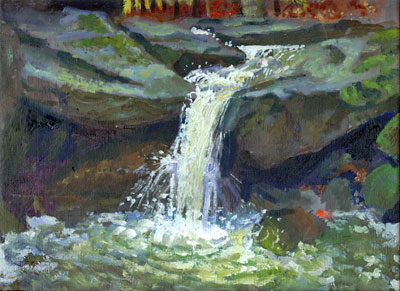
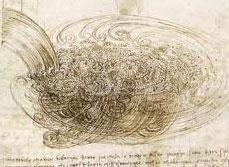
.jpg)
